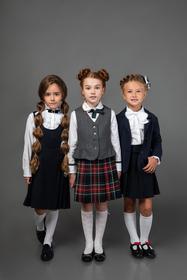Monroe Correctional Facility serves 27 students in grades 7-12.
The student-teacher ratio of 2:1 was lower than the New York state level of 11:1.
Minority enrollment was 96% of the student body (majority Black), which was higher than the New York state average of 60% (majority Hispanic and Black).
Top Rankings
Monroe Correctional Facility ranks among the top 20% of public schools in New York for:
Category
Attribute
Percent Eligible For Free Lunch
Community Size
Student Attention
School Overview
School Type
Grades Offered
Grades 7-12
(No virtual instruction)
(No virtual instruction)
Total Students
27 students
Gender %
Total Classroom Teachers
18 teachers
School Rankings
Student-Teacher Ratio
2:1
11:1
American Indian
4%
1%
Asian
n/a
10%
Hispanic
11%
30%
Black
74%
16%
White
4%
40%
Hawaiian
n/a
n/a
Two or more races
7%
3%
All Ethnic Groups
Eligible for Free Lunch
100%
54%
School Statewide Testing
School District Name
Source: National Center for Education Statistics (NCES), NY Dept. of Education
Frequently Asked Questions
How many students attend Monroe Correctional Facility?
27 students attend Monroe Correctional Facility.
What is the racial composition of the student body?
74% of Monroe Correctional Facility students are Black, 11% of students are Hispanic, 7% of students are Two or more races, 4% of students are American Indian, and 4% of students are White.
What is the student-teacher ratio of Monroe Correctional Facility?
Monroe Correctional Facility has a student ration of 2:1, which is lower than the New York state average of 11:1.
What grades does Monroe Correctional Facility offer ?
Monroe Correctional Facility offers enrollment in grades 7-12 (No virtual instruction).
What school district is Monroe Correctional Facility part of?
Monroe Correctional Facility is part of Rochester City School District.
In what neighborhood is Monroe Correctional Facility located?
Monroe Correctional Facility is located in the Downtown neighborhood of Rochester, NY. There are 1 other public schools located in Downtown.
Recent Articles

Public School Open House & Enrollment Season Guide
A parent-focused guide to the public school open house and enrollment season, with expert questions, timelines, and decision tips.

School Supply Budget 2026: Fees, Books, Tech Costs
School Supply Budget 2026 guide for parents, covering fees, textbooks, technology, and hidden extras to plan ahead.

Education Funding in America (2025 Update)
Comprehensive 2025 update on public school funding in America, new federal and state policies, per-pupil spending, and equity challenges.





